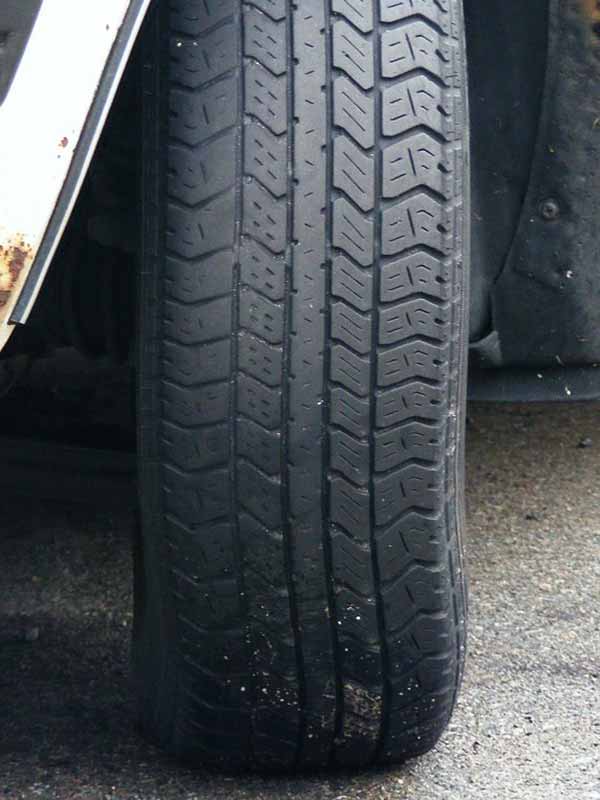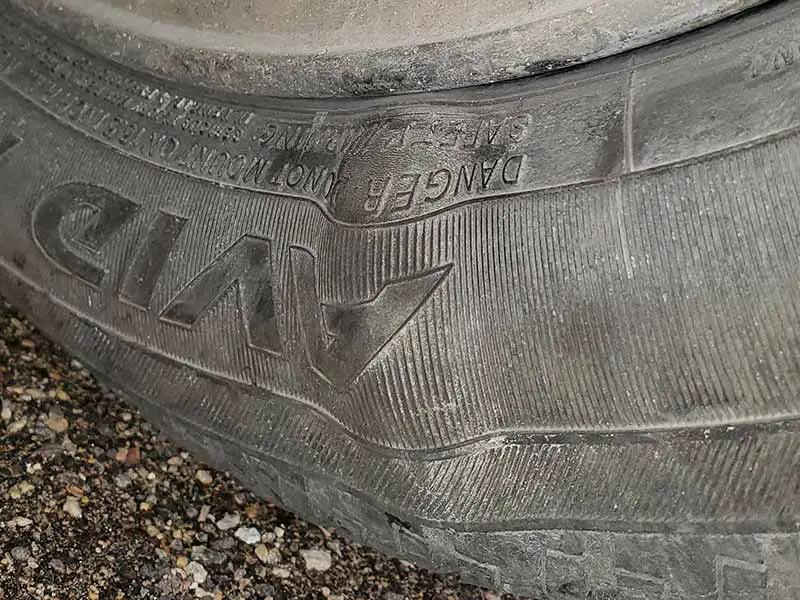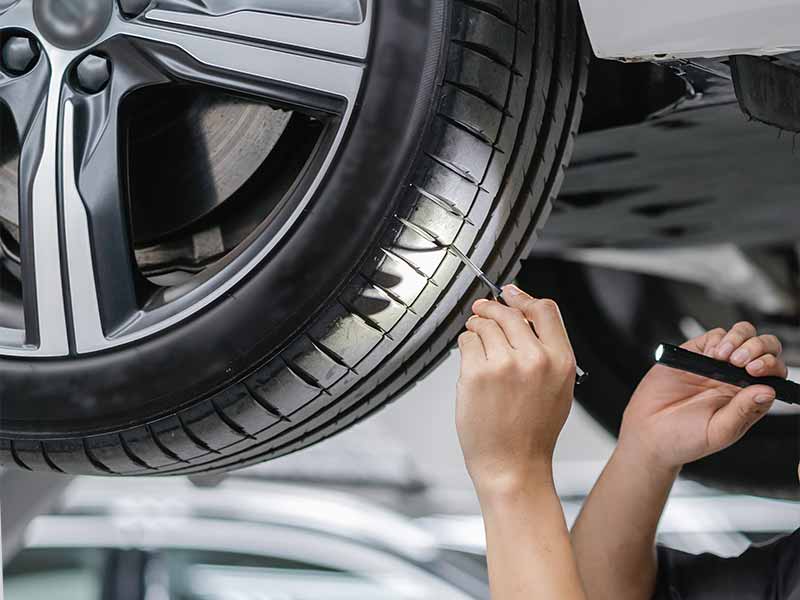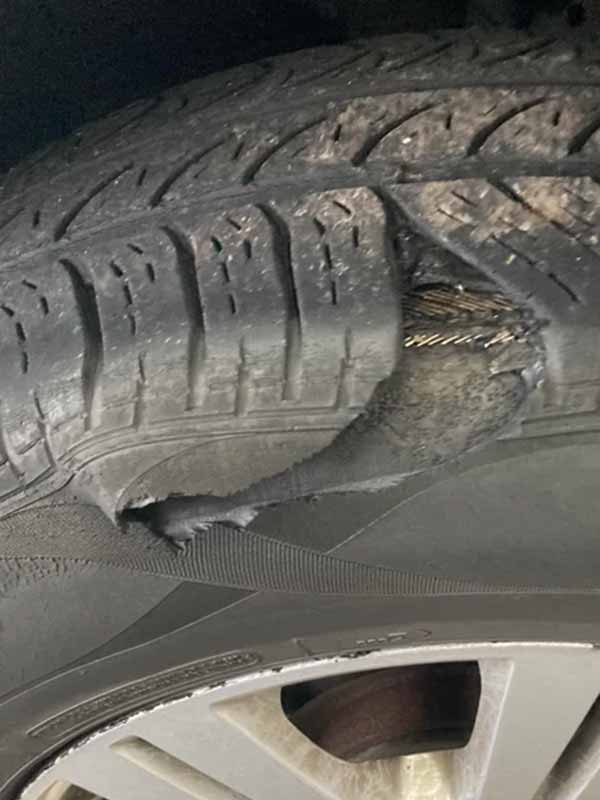Have you ever felt that sudden jolt after hitting a pothole or curb, and wondered, “Did I just damage my tire?” You’re not alone. Many drivers experience this concern but aren’t sure what signs to look for or what steps to take next.
Signs of Internal Tire Damage
Signs of internal tire damage can include visible sidewall damage such as bulges, cracks, or cuts, and driving symptoms like unusual vibrations, noise, or steering wheel shake.
Regular inspections and immediate attention to these signs are crucial for tire safety.
In this article, you’ll discover the key indicators of internal tire damage, learn how to spot them, and find out what actions you should take to address these issues effectively.

Understanding Tire Damage Basics
We’re going to break down what internal tire damage means, why it happens, and why you should care. Think of it as a quick guide to keeping your tires in top shape, inside and out.
What Exactly is Internal Tire Damage?
Internal tire damage is like the secret problem you don’t see until it’s too late. It’s all about the damage inside your tire, which isn’t visible just by looking at it. Here’s what it includes:
- Hidden Hurts: It’s the damage to the parts of the tire you can’t see – the internal structure and the rubber compounds.
- Invisible Issues: From breaks in the tire’s framework to breakdowns in the rubber, it’s the stuff that compromises your tire’s health from the inside.
How Do Tires Get Damaged Internally?
- Oops, That Was a Big Pothole: Ever hit a pothole or a curb really hard? That jolt can do more than just startle you – it can mess up your tire from the inside.
- Sneaky Punctures: Think a nail in your tire is just a quick fix? Sometimes, a nail can cause more than just a hole. It might be damaging your tire internally without you even knowing.
- The Aging Process: Tires get old, just like us. And as they age, they don’t just wear out on the outside. The inside gets weaker too.
- Neglected Tires: Not taking care of your tires? Skipping on maintenance can turn small problems into big, internal ones.
Why Should You Care About Internal Tire Damage?
Ignoring what’s going on inside your tires can lead to some not-so-great stuff:
- Less Zoom-Zoom: Your car won’t drive as well, and who wants that?
- Uh-Oh, Flat Tire: Worse, you could get a flat at the worst possible time, like when you’re running late or it’s pouring rain.
- Hello, Expensive Repairs: Let’s not forget, small issues now can mean big, costly repairs later.

Sidewall Damage Indicators
We’re talking bulges, cracks, and all sorts of weird things that can pop up. Here’s the lowdown on spotting them and understanding what they mean for sidewall damage.
Bulges: The Bumps You Don’t Want
- What They Look Like: Bulges are like little balloons on your tire’s sidewall. They stick out and just don’t look right.
- Why They’re Bad News: A bulge means the internal structure of the tire has been compromised. It’s like a weak spot that could lead to a blowout.
- What to Do: If you spot a bulge, don’t ignore it. It’s time for a tire check-up. You can learn more about dealing with small bulges in tire sidewalls on our site.
Cracks: The Silent Tire Killer
- The Sneak Attack: Cracks can be tiny and hard to spot, but they’re a sign your tire is aging and losing its flexibility.
- Why Worry: Over time, these cracks can deepen, leading to leaks or even tire failure.
- Pro Tip: Regularly clean and inspect your tires to catch these sneaky little lines before they become big problems.
Punctures and Cuts: More Than Meets the Eye
- The Obvious and Not-So-Obvious: Sure, a big gash is easy to spot, but smaller punctures and cuts can also hide deeper damage.
- The Inside Story: Even if it looks minor, a puncture can harm the internal structure of your tire, especially if it’s left unattended.
- Action Plan: Got a puncture? Check out how to handle a nail in your tire and when it’s more than just a surface issue.
Chunking: When Your Tire Loses a Piece of Itself
- The Rough Patches: Chunking is when pieces of your tire’s tread or sidewall start to come off. It’s like your tire is shedding!
- The Bigger Picture: It’s often a sign of serious tire wear or damage from hitting something hard.
- What You Can Do: If you see chunking, it’s definitely time for a professional tire inspection.
Blowouts: The Big Scare
- The Dramatic Exit: A blowout is when your tire suddenly loses all its air. It’s loud, scary, and super unsafe.
- Why They Happen: Often, blowouts are the final act of ignored tire issues, like those bulges or cracks we talked about.
- Stay Safe: Regular checks can prevent this dramatic tire meltdown. Also, knowing how to handle a blowout can be a lifesaver.
Heat Ring on Tire: A Silent Alarm
- The Hidden Clue: A heat ring is a discolored band on the tire, usually near the edge of the tread.
- Decoding the Sign: It’s a sign your tire’s been running too hot, which can weaken its structure.
- Stay Cool: Make sure your tires are properly inflated and balanced to avoid this overheating issue.

Signs of Internal Tire Damage While Driving
It’s not always about what you see; sometimes, it’s about what you feel and hear. From vibrations to strange noises, your car has ways of telling you something’s up with your tires. Let’s decode those signals.
Vibration: The Unwanted Rumble
- What You Feel: It’s like your car is getting a case of the shakes. You might feel it in the steering wheel or the whole car.
- The Culprit: Often, this vibration is a sign of uneven tire wear or internal damage. It could also be an imbalance issue.
- Quick Tip: If your steering wheel is doing a dance, it might be time to check out steering wheel vibration causes.
Tread Separation: The Silent Sneak
- What’s Happening: Tread separation is when the tread of your tire starts to peel away from the body. It’s like your tire’s coming apart at the seams.
- The Warning Signs: You might feel a weird wobble or bumpiness as you drive. It’s your tire telling you it’s not okay.
- Dig Deeper: Learn about tire separation and why it’s a big deal for your safety.
Noise: When Your Tires Start Talking
- The Soundtrack: It’s not your usual road noise. We’re talking thumping, humming, or a flapping sound.
- Why It’s Bad: These noises can be signs of internal damage, like tread issues or something caught in your tire.
- What To Do: Don’t just turn up the radio. If your tires are making odd noises, it’s time to get them checked.
Steering Wheel Shake: The Telltale Tremor
- The Feel: It’s when your steering wheel starts to shake or tremble, especially at certain speeds.
- Possible Reasons: This could be a sign of tire imbalance, misalignment, or internal damage affecting the tire’s rotation.
- Action Steps: A shaky steering wheel shouldn’t be ignored. It might be more than just an alignment issue.
TPMS Warning: Your Car’s Alert System
- The Heads-Up: Most modern cars have a Tire Pressure Monitoring System (TPMS) that alerts you when tire pressure is low.
- Beyond Pressure: While it’s often just a pressure issue, a TPMS warning can sometimes hint at more serious tire damage.
- Be Proactive: Regularly check your tire pressure and respond promptly to TPMS alerts to catch issues early.
Symptoms of Tread Separation
Tread separation is when the tread starts to part ways with the rest of the tire. It’s a big deal, and here’s how you can tell if it’s happening to your tires.
The Warning Signs of Tread Separation
- The Bumpy Road Feel: If driving suddenly feels like you’re on a gravel road even when you’re not, it could be tread separation.
- Visual Red Flags: Keep an eye out for any visible signs. If parts of your tread look like they’re peeling away or you see bulges or blisters, that’s a major heads-up.
- Strange Noises: Hear a flapping or thumping sound? That could be your tread waving goodbye. It’s not a sound you want to ignore.
Why Tread Separation is a Big Deal
- Safety First: Tread separation can seriously mess with your car’s handling and stability. It’s not something to take lightly.
- Risks On The Road: If it gets bad, it can lead to a full-blown tire blowout. And trust me, that’s not something you want to experience at high speeds.
What Causes Tread Separation?
- Wear and Tear: The usual suspects like aging, wear, and lack of maintenance can lead to the tread separating from the tire.
- Manufacturing Flaws: Sometimes, it’s not your fault at all. Manufacturing defects can also lead to tread separation.
- Past Injuries: Remember those times you hit a pothole or curb? Those impacts can contribute to the problem over time.
Taking Action: What to Do if You Suspect Tread Separation
- Don’t Delay: If you notice any signs of tread separation, it’s time to act fast. This isn’t something to put on the back burner.
- Professional Check-Up: Get your tires inspected by a pro. They can tell you if it’s tread separation or something else.
- Stay Informed: Educate yourself about tire maintenance and care. Check out our guide on tire separation for more info.

Immediate Actions and Preventive Measures
Alright, now that we’ve talked about all the nitty-gritty details of tire damage, let’s focus on what you can do about it. It’s all about taking quick action and being proactive.
What to Do If You Suspect Internal Tire Damage
- Don’t Play the Waiting Game: Noticed something off with your tires? It’s better to be safe than sorry. Don’t wait for it to become a bigger problem.
- Get Professional Eyes on It: Seriously, a pro can spot things you might miss. They’ll give your tires the thorough check-up they need.
- Consider a Replacement: Sometimes, repair isn’t enough. If the damage is serious, you might need to bid farewell to your tire and get a new one.
Regular Checks: Your Tire’s Best Friend
- Air Pressure: Keep those tires inflated right. Incorrect air pressure can lead to all sorts of issues.
- Tire Tread Depth: Keep an eye on your tread depth. Worn-out tread is a one-way ticket to Tire Trouble Town.
- Look for Visual Damage: Regularly inspect your tires for any signs of damage like cuts, bulges, or anything unusual.
Preventive Measures to Keep Your Tires Happy
- Drive Carefully: Avoid hitting curbs or potholes. Easier said than done, I know, but your tires will thank you.
- Regular Maintenance: Get your tires rotated and balanced regularly. It helps in even wear and tear.
- Stay Informed: Knowledge is power. The more you know about tire maintenance, the better you can take care of them. Dive into our resources on tire sidewall damage for some handy tips.
Resources
Below are some links you may find helpful when learning about tires:
- How to inspect tires for damage – Consumer Reports
- Understanding tire wear and preventing tire failure – National Highway Traffic Safety Administration
- Tire maintenance and avoiding tire blowout – Bridgestone Tires
- Comprehensive guide to tire safety – Safercar.gov
Final Thoughts
Regular checks for signs like sidewall damage, tread issues, and unusual driving sensations are key. Taking these issues seriously and addressing them promptly can significantly enhance your safety on the road.
Whether it’s a bulge from a pothole hit or a vibration that just doesn’t feel right, being proactive about your tire’s health is crucial. By staying informed and vigilant, you can ensure a safer, smoother driving experience and prolong the life of your tires.
Good luck and happy motoring.





